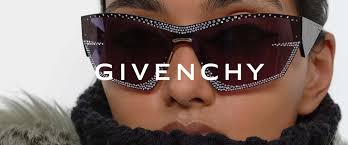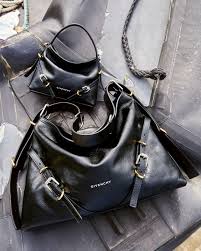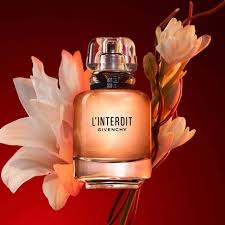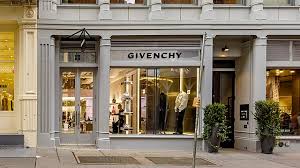
Introduction
In the haute couture and luxury fashion industry, few brands epitomize elegance, sophistication, and innovation like Givenchy. Founded by the visionary Hubert de Givenchy in 1952, the brand is synonymous with refined style, impeccable tailoring, and bold creativity. From dressing Hollywood icons such as Audrey Hepburn to redefining contemporary fashion with modern designers like Riccardo Tisci and Clare Waight Keller, Givenchy remains a powerhouse in the fashion industry.
This article delves into the brand’s history, evolution, iconic collections, and its continued influence in luxury fashion.
The Legacy of Hubert de Givenchy
The Beginning of a Fashion Empire
Founded in Paris, France, in 1952 by Hubert de Givenchy, who aimed to create a sophisticated silhouette that could add style without becoming anything outdated, the eponymous label was directly influenced by the legendary Cristóbal Balenciaga, his designs being a classic with modern twists.
One of his first breakthroughs came with the Bettina Blouse, a voluminous white shirt named after model Bettina Graziani. This design set the tone for it’s signature style—graceful, minimal, yet striking.

The Audrey Hepburn Connection
It’s collaboration with Audrey Hepburn became one of the most iconic designer-muse relationships in fashion history. He designed her wardrobe for several films, including:
Sabrina (1954)
Breakfast at Tiffany’s (1961) – Featuring the legendary black dress
Funny Face (1957)
Charade (1963)
Audrey Hepburn’s personal interest in it went beyond film; she regularly wore his clothes in real life, making the brand an establishment in Hollywood and high society circles.
Givenchy Through the Ages
The 1970–1990s: Entering Fragrances and Menswear
As it became a world phenomenon, the brand began exploring new markets in:
Perfumes: With “L’Interdit” in 1957, launched based on the inspiration of Audrey Hepburn, the brand stepped into luxury fragrances.
Menswear: Givenchy Homme was launched in 1969, catering to men’s high-end tailoring.
Accessories: Handbags, footwear, and jewelry were added as a part of the ready-to-wear range.
2000s: Rediscovery by Riccardo Tisci

It welcomed the Italian designer Riccardo Tisci as Creative Director in 2005. He introduced dark romanticism with streetwear appeal, changing the identity of the brand for younger generations.
This is the era when Tisci gave birth to some of the brand’s most-talked-about moments:
Kanye West and Jay-Z were frequent wearers of it’s edgy streetwear pieces.
The Rottweiler T-shirt, 2011, was a streetwear phenomenon.
Givenchy caught celebrities’ attention with Beyoncé, Kim Kardashian, and Rihanna.
Clare Waight Keller & Meghan Markle’s Wedding Dress (2017–2020)
In 2017, it welcomed a new Creative Director, Clare Waight Keller-the first woman at the helm. Her defining moment was when she designed Meghan Markle’s royal wedding dress during her marriage to Prince Harry in 2018.
The very simple, very elegant, yet very classy minimalist white boat-neck gown made people around the globe praise Givenchy for being such a luxury power house.
Givenchy Today: The Matthew M. Williams Era
In 2020, Matthew M. Williams, who was working with streetwear brand Alyx, became the Creative Director of Givenchy. His designs focus on:
- Blending high fashion with utility wear.
- Modern tailoring with a futuristic edge.
- Sustainability and innovation in fabrics.
- His collections have reintroduced to a younger, more diverse audience, making the brand relevant in the ever-evolving fashion industry.

Most Iconic Pieces & Collections of Givenchy
- The Little Black Dress (LBD)
Perhaps the most iconic Givenchy piece of all, Audrey Hepburn’s black dress in Breakfast at Tiffany’s continues to be the epitome of style. - The Antigona Handbag
It is one of the luxury handbags that stands for a silhouette of structure and durability and the style that transcends time. - Shark Lock Boots
It is the epitome of the fashion shoe line, where it is widely accepted by the celebrities and the influencers. - The Fragrances by Givenchy
The brand’s perfumes, such as L’Interdit, Amarige, and Gentleman Givenchy, remain at the top of the luxury perfume market.
Why Givenchy Remains Relevant
Givenchy’s capacity to change with the fashion trends yet retaining its sense of class and sophistication has made it a luxury leader. Here’s why it remains relevant:
Innovative Leadership: Each Creative Director has brought a new perspective.
Celebrity Influence: It has been endorsed by A-list stars, from Hepburn to Beyoncé.
Timeless Appeal: Designs are both modern and ageless.
Luxury with Accessibility: It combines haute couture and ready-to-wear.

Conclusion
From a Parisian couture house to a global fashion empire, it has been a witness to the testament of timeless elegance, creative innovation, and luxury craftsmanship. From its iconic dresses to the highly sought-after accessories or cutting-edge streetwear, it is one of the most influential fashion brands in history.
What’s Next for Givenchy?
With Matthew M. Williams at the helm, it continues to push boundaries in fashion. Whether you’re a fan of classic couture or modern streetwear, Givenchy offers a piece of fashion history that continues to evolve with the times.
